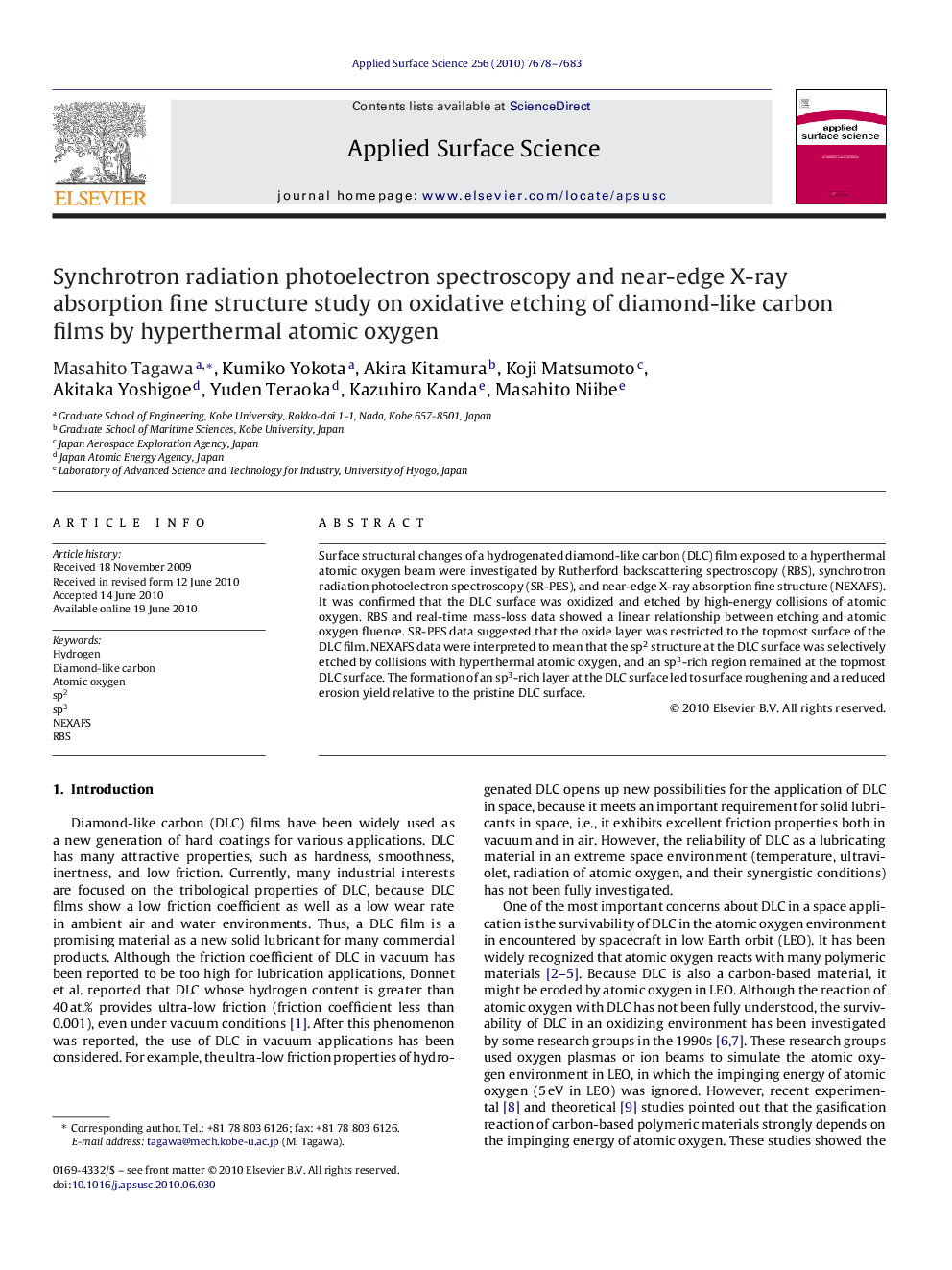| Article ID | Journal | Published Year | Pages | File Type |
|---|---|---|---|---|
| 5362695 | Applied Surface Science | 2010 | 6 Pages |
Surface structural changes of a hydrogenated diamond-like carbon (DLC) film exposed to a hyperthermal atomic oxygen beam were investigated by Rutherford backscattering spectroscopy (RBS), synchrotron radiation photoelectron spectroscopy (SR-PES), and near-edge X-ray absorption fine structure (NEXAFS). It was confirmed that the DLC surface was oxidized and etched by high-energy collisions of atomic oxygen. RBS and real-time mass-loss data showed a linear relationship between etching and atomic oxygen fluence. SR-PES data suggested that the oxide layer was restricted to the topmost surface of the DLC film. NEXAFS data were interpreted to mean that the sp2 structure at the DLC surface was selectively etched by collisions with hyperthermal atomic oxygen, and an sp3-rich region remained at the topmost DLC surface. The formation of an sp3-rich layer at the DLC surface led to surface roughening and a reduced erosion yield relative to the pristine DLC surface.
